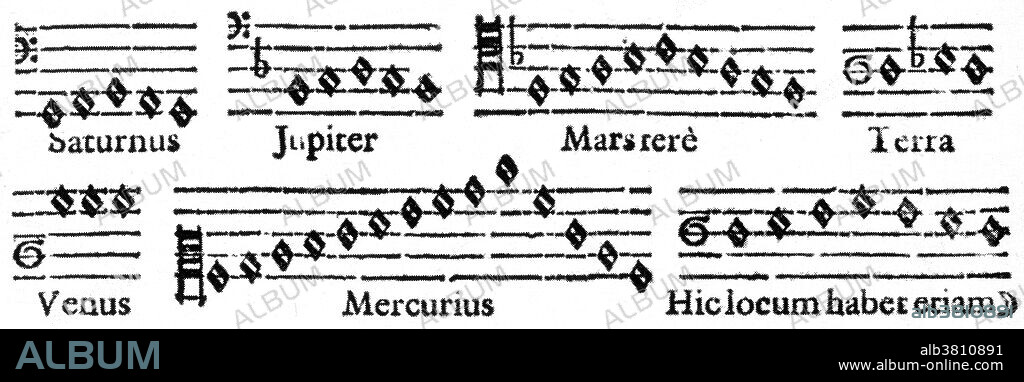alb3810891
Harmony of the World, 1619

|
Ajouter à une autre Lightbox |
|
Ajouter à une autre Lightbox |



Avez-vous déjà un compte? S'identifier
Vous n'avez pas de compte ? S'inscrire
Acheter cette image.
Sélectionnez l'usage:

Titre:
Harmony of the World, 1619
Légende:
Voir la traduction automatique
In Harmonices Mundi (1619) Kepler attempted to explain the harmony of the world and contained what is known today as his third law. The work was founded on geometry, from which Kepler derived first a theory of musical harmony and then a cosmology of the heavens and the earth. Kepler attempted to find common rules between music and movement in the solar system. His music of the spheres is based on the relative maximum and minimum angular velocities of the planet measured from the sun. Using his theories, Kepler allotted to the planets musical intervals and musical motion. Johannes Kepler (1571-1630) was a German mathematician, astronomer and astrologer. A key figure in the 17th century scientific revolution, he is best known for his laws of planetary motion based on his works Astronomia nova, Harmonices Mundi, and Epitome of Copernican Astronomy. These works also provided one of the foundations for Isaac Newton's theory of universal gravitation.
Crédit:
Album / Science Source / New York Public Library
Autorisations:
Taille de l'image:
5529 x 1774 px | 28.1 MB
Taille d'impression:
46.8 x 15.0 cm | 18.4 x 5.9 in (300 dpi)
Mots clés:
16E SIECLE • 16EME S • ALLEMAND • ALLEMANDE • ASTROLOGIE • ASTRONOMIE • CÉLÈBRE • CELEBRITE • EUROPÉEN • HOMME DE SCIENCE • ILLUSTRATION • MATHEMATICIEN • MATHÉMATIQUE • OBSERVATOIRE • PLANETARIUM • PORTAIT • PORTRAIT • POTRAIT • SAVANT • SCIENCE: ASTROLOGIE • SCIENCE: ASTRONOMIE • SCIENTIFIQUE • SEIZIÈME SIÈCLE • XVIE SIECLE • ZODIAQUE, ASTROLOGIE
 Pinterest
Pinterest Twitter
Twitter Facebook
Facebook Copier le lien
Copier le lien Email
Email
